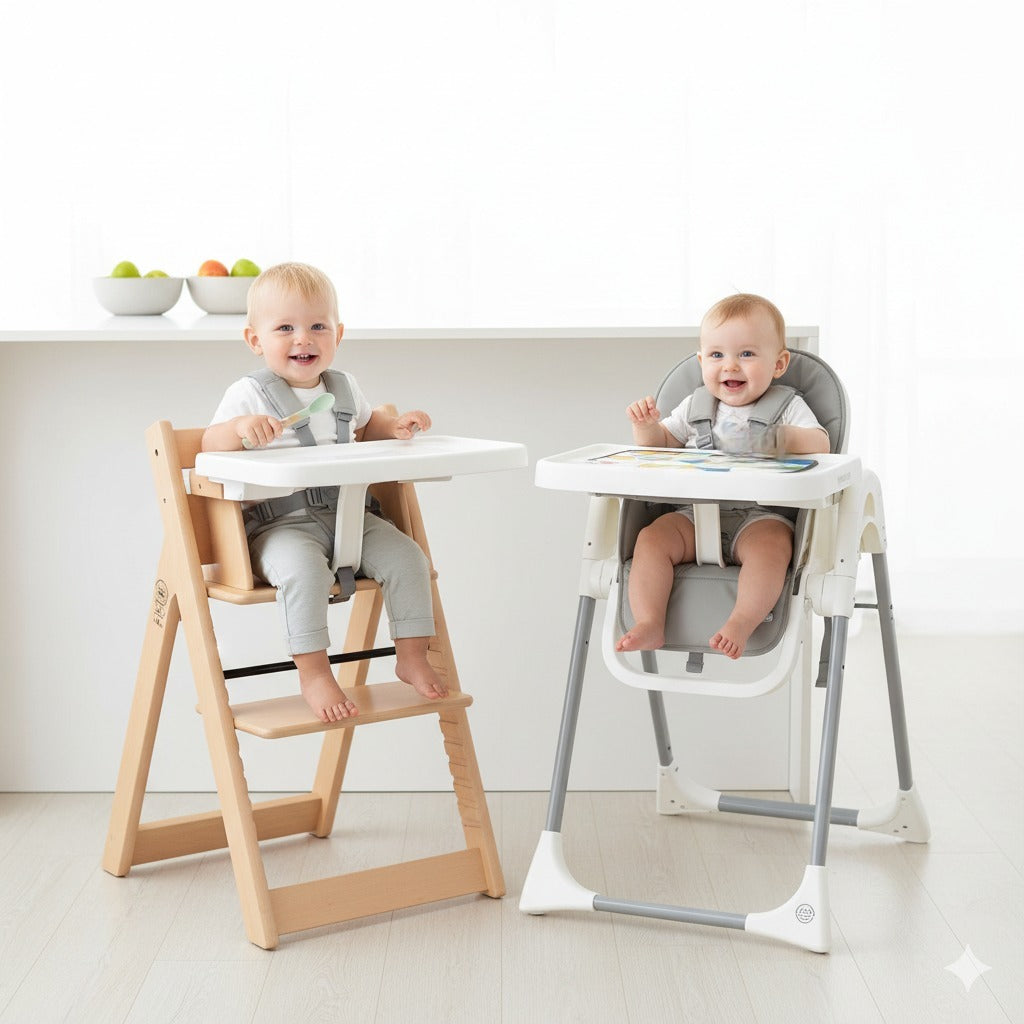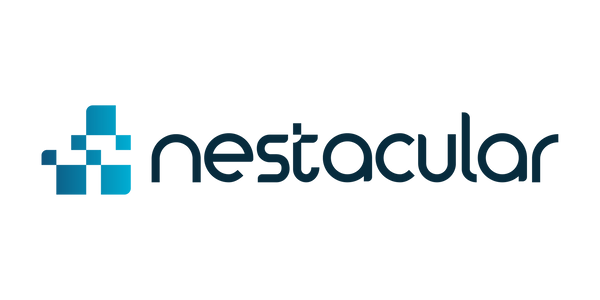
High Chair Safety: Recalls, Standards & What to Look For
Share
Disclosure
About This Guide:
This article is published by Nestacular, a baby products retailer. All featured products are sold by us, and we earn revenue from purchases.
Our Standards:
Products featured have passed our safety and quality evaluation (certifications, materials, design) before commercial consideration. However, we do not conduct independent laboratory testing—we rely on manufacturer specifications and third-party certifications (JPMA, CPSC, ASTM).
Medical Review:
This content has been primarily authored by Dr. Sumaiya P.N (Registered Dietitian, Certified Diabetes Educator, General Physician - BUMS) specializing in pediatric nutrition, with practical parenting insights contributed by Tayla White (Product Research Specialist). All health-related content have been medically reviewed by Dr. Kingsley CN (Consultant Radiologist, HSE certified) and Dr. Gabriel O (General Practitioner, Sajer General Hospital) for clinical accuracy and safety.
For Your Child's Safety:
This guide provides general information only. Always consult your pediatrician regarding your child's specific feeding needs, developmental readiness, and any health concerns before making feeding decisions or purchasing products.
Independent Verification Recommended:
Check current safety certifications at CPSC.gov and JPMA.org, and search for product recalls before purchasing.
Key Takeaways & Summary
- Look for JPMA certification which verifies chairs meet ASTM safety standards[1]
- Check CPSC.gov regularly - multiple high chair recalls occurred in 2024-2025[2]
- Always use the 5-point harness system correctly for every meal
- Inspect for proper tray locking, stable base, and appropriate leg openings
- Never leave children unattended in high chairs, even when properly strapped
Every year, thousands of children visit emergency rooms due to high chair-related injuries.
While these essential feeding tools help babies join family mealtimes, understanding safety standards, recognizing recall patterns, and knowing what features to prioritize can mean the difference between a secure mealtime and a dangerous situation.
Recent recalls from brands like Boyro Baby, Costway, and HONEYJOY highlight ongoing safety concerns in the high chair market[2,3,4].
We'll guide you through current safety certifications, help you identify red flags, and showcase safer alternatives from our carefully curated collection.
High Chair Safety Standards Timeline
Understanding Safety Certifications
Not all high chairs meet the same safety standards.
The Juvenile Products Manufacturers Association (JPMA) certification indicates that a high chair has been independently tested to meet or exceed ASTM International safety standards and federal regulations[1,5].
This voluntary certification goes beyond minimum requirements, testing for stability, restraint effectiveness, and structural integrity.
Major Safety Certifications to Look For
🏆 JPMA Certified
Meets US federal and state regulations, tested by independent labs for safety and performance[1]
🌍 EN 14988
European Union safety standard for high chairs, ensuring stability and restraint requirements
🌱 Greenguard Gold
Low chemical emissions certification, important for products in your baby's breathing zone
✓ CE Mark
Mandatory for EU products, indicates compliance with health and safety standards
Recent Recalls: What Went Wrong
⚠️ 2024-2025 High Chair Recall Alert
Recent CPSC investigations found multiple violations including insufficient restraint systems, stability failures, excessive leg openings, and entrapment hazards[2,3,4]. Many recalled chairs were sold exclusively through online marketplaces, highlighting the importance of buying from reputable retailers.
The Bugaboo Giraffe recall involved 22 reports of chair legs detaching, resulting in 13 minor injuries[6].
Meanwhile, brands like Boyro Baby and Funlio faced recalls for violating federal regulations regarding fall and entrapment hazards.
These recalls emphasize why checking for proper certifications matters more than ever.
Essential Safety Features Checklist
What to Inspect Before Every Purchase
🔒 Restraint System
- 5-point harness (shoulders, waist, crotch)
- Adjustable straps for proper fit
- Secure buckles requiring two actions to open
- Crotch post to prevent sliding
🏗️ Structural Safety
- Wide, stable base prevents tipping
- Locking mechanisms on folding parts
- Smooth edges without sharp corners
- Appropriate leg openings (not too wide)
🍽️ Tray Features
- Secure locking mechanism
- One-handed release for adults only
- Adjustable distance positions
- Dishwasher-safe materials
📋 Documentation
- Clear assembly instructions
- Warning labels properly placed
- Registration card included
- Certification marks visible
Safe High Chairs from Our Collection
We've carefully selected high chairs that prioritize safety without compromising on style or functionality.
Each product in our collection meets rigorous safety standards, and we continuously monitor for any safety updates or concerns.
Explore our complete high chair collection or check out these featured safety-conscious options:

3-in-1 Convertible Baby High Chair
- Safety harness included
- Anti-slip feet design
- BPA-free materials
- Detachable easy-clean tray

Aibedo Foldable High Chair
- Multiple height adjustments
- Space-saving foldable design
- Reinforced frame construction
- Easy-to-clean surfaces

Amobi Adjustable Portable Chair
- Multi-functional 2-in-1 design
- Portable & lightweight
- Multiple height settings
- Converts to bench seating
Additional Safety Considerations
Beyond checking certifications and features, proper use remains critical. According to Safe Kids Worldwide, most high chair injuries can be prevented by correctly using safety restraints every single time[7].
Never allow standing, climbing, or playing on the chair, and always place it on a flat, stable surface away from walls, counters, and tables that children might push against.
For growing families, consider our convertible high chair options that adapt from infant to toddler stages.
These models often provide better long-term value while maintaining safety standards throughout your child's development. You might also find our guide on when to transition from high chairs to booster seats helpful.
Making the Right Choice for Your Family
Selecting a safe high chair involves balancing certification standards, practical features, and your family's specific needs.
Start by checking for JPMA certification or equivalent safety marks, then evaluate the restraint system, stability, and ease of cleaning.
Remember that the most expensive option isn't always the safest – focus on verified safety features over aesthetics.
Browse our high chair accessories collection for additional safety items like cushions and placemats that enhance comfort without compromising security.
For parents interested in the broader feeding journey, our Baby-Led Weaning High Chair Guide offers insights into choosing chairs that support independent eating safely.
Staying Informed About Safety
High chair safety evolves as new research emerges and standards update.
Sign up for recall alerts at CPSC.gov, register your high chair with the manufacturer, and regularly inspect your chair for wear or damage.
Check that all screws remain tight, restraints function properly, and no cracks have developed in plastic components.
For comprehensive feeding safety, explore our non-toxic baby tableware collection and mess-free feeding essentials designed to complement your safe high chair setup.
Disclaimer: This guide provides general recommendations about high chair safety and is not intended as a substitute for professional safety advice or product recalls. Always check current recall status at CPSC.gov and follow manufacturer guidelines. For specific safety concerns about your child's feeding equipment, consult with your pediatrician or a certified child safety technician.
References
- JPMA Certification Program - Juvenile Products Manufacturers Association
- Boyro Baby Recalls High Chairs Due to Risk of Serious Injury - CPSC
- Costway Recalls Babyjoy High Chair Activity Centers - CPSC
- HONEYJOY Recalls Multiple Convertible High Chairs - CPSC
- Understanding High Chair Safety Standards Guide
- Bugaboo North America Recalls Giraffe High Chairs - CPSC
- Can Your High Chair Be Dangerous? - Safe Kids Worldwide
Meet Our Editorial Team

Dr Sumaiya P.N
Registered Dietitian & Lead Nutrition Author
✓ Certified Diabetes Educator (CDE)
✓ General Physician (BUMS)
✓ Verified: Indian Dietetic Association
Dr Sumaiya P.N is a Registered Dietitian, Certified Diabetes Educator, and General Physician (BUMS) specializing in nutritional management for children, pregnancy, lactation, and family health. She is the founder of Nutricare Healthcare clinic in Mumbai, providing dietary coaching and family physician services to patients worldwide. Dr Sumaiya serves as the lead nutrition content author for Nestacular, creating and overseeing all nutrition-related articles with expertise in pediatric nutrition, infant feeding, medical nutrition therapy, and child health. Her work is medically reviewed by Dr Kingsley CN and Dr Gabriel O to ensure comprehensive accuracy. She has worked at KEM Hospital and GT Hospital in Mumbai and specializes in nutritional management during critical growth periods including infancy, childhood, pregnancy, and lactation.

Dr. Kingsley CN
Consultant Radiologist & Medical Contributor
✓ Safety Certification (HSE 1,2,3) - CIEHS
Dr. Kingsley CN is a qualified Consultant Radiologist with specialized expertise in child safety, baby nutrition, and product safety evaluation. He holds professional safety certifications including HSE (Health, Safety & Environmental) credentials from the Chartered Institute of Environmental Health and Safety. Dr. Kingsley writes evidence-based articles and conducts medical reviews for the editorial team. His content is reviewed by Dr. Gabriel O for medical accuracy, and he provides comprehensive medical review for content authored by other team members to ensure parents receive accurate, trustworthy information.

Tayla White
Product Research & Testing Specialist
Tayla White is a mother of four from Walsall, England, who brings real-world parenting experience to Nestacular's product evaluation process. She conducts hands-on testing of baby feeding products, safety assessments, and usability research with her children across different age groups. Tayla provides practical insights on product functionality, durability, and parent-friendliness that inform product selection and recommendations. Her testing feedback helps ensure that products meet the everyday needs of busy parents.

Dr. Gabriel O
General Practitioner & Medical Reviewer
Dr. Gabriel O is a qualified General Practitioner with extensive experience in pediatric care and child health. Based at Sajer General Hospital in Saudi Arabia, he specializes in child safety, developmental health, and family medicine. Dr. Gabriel reviews all articles for medical accuracy, safety recommendations, and alignment with current pediatric guidelines. His comprehensive medical review ensures every piece of health-related content meets rigorous clinical standards.
